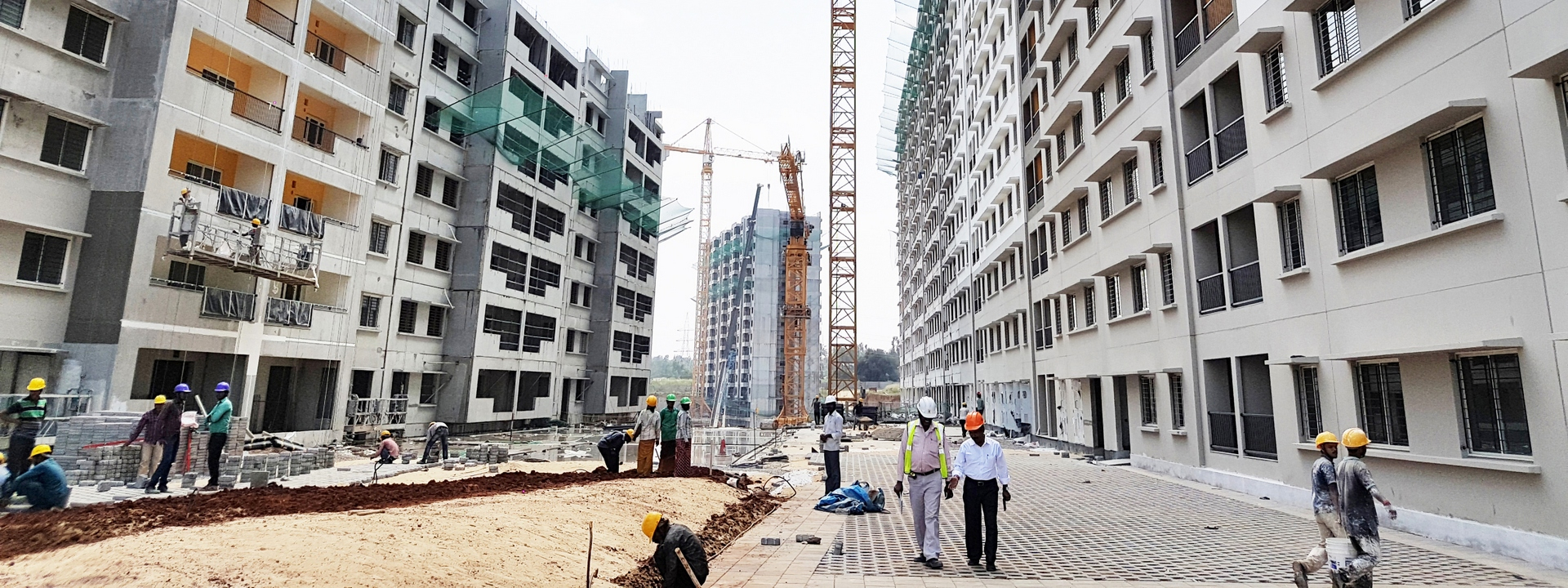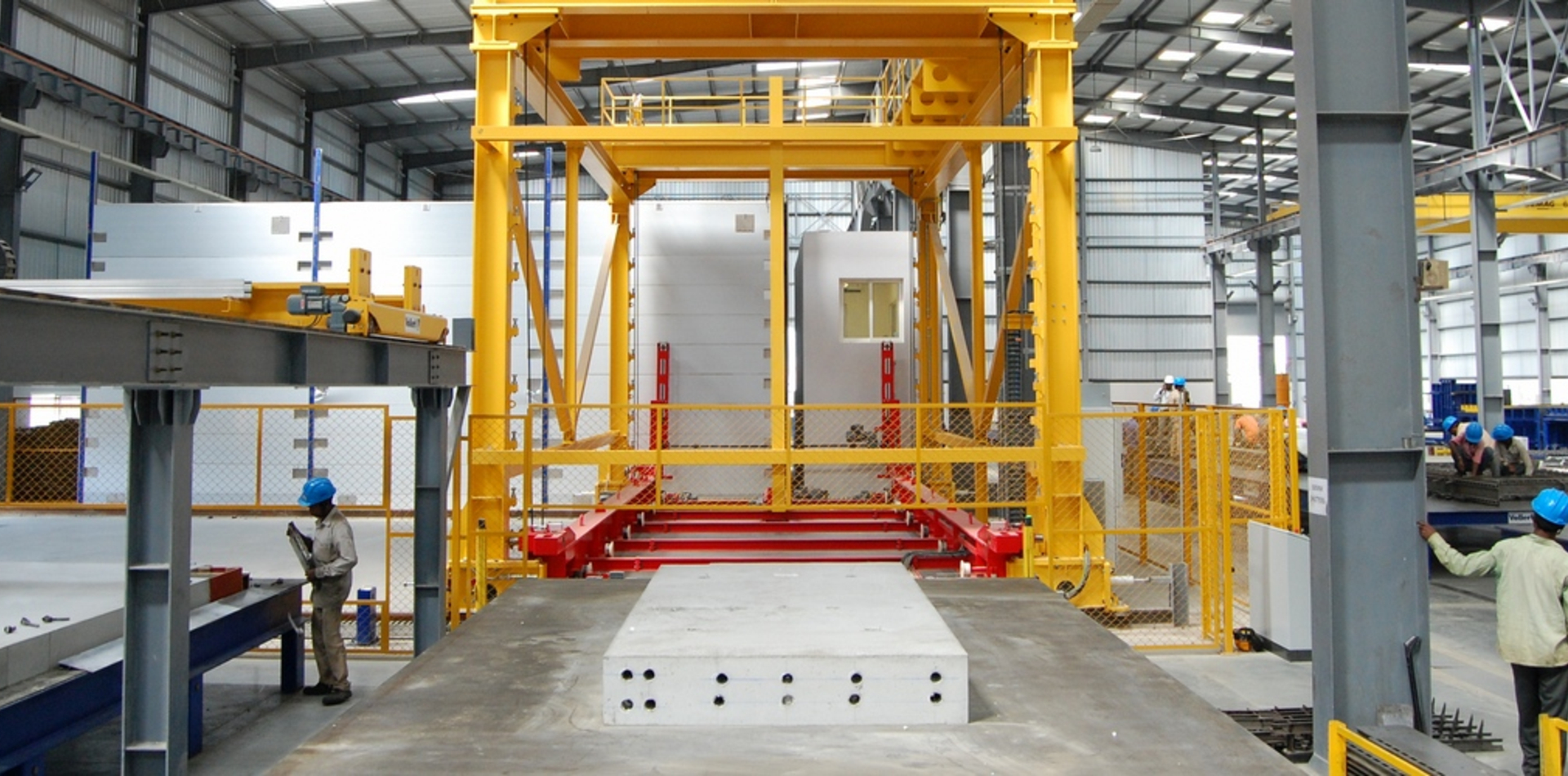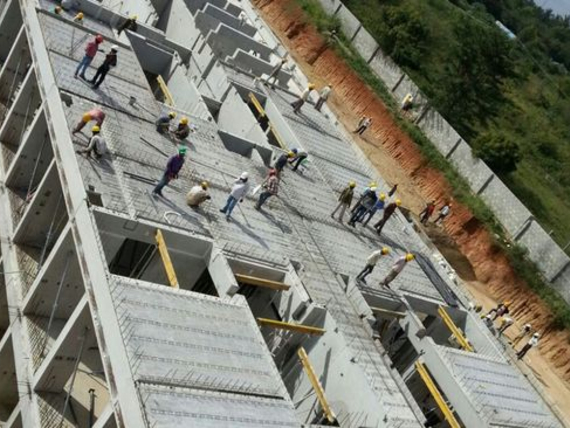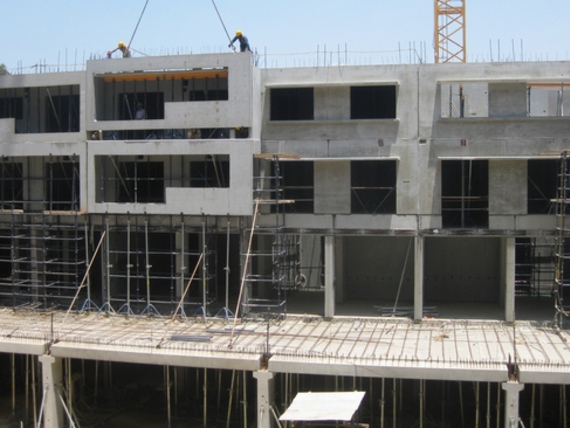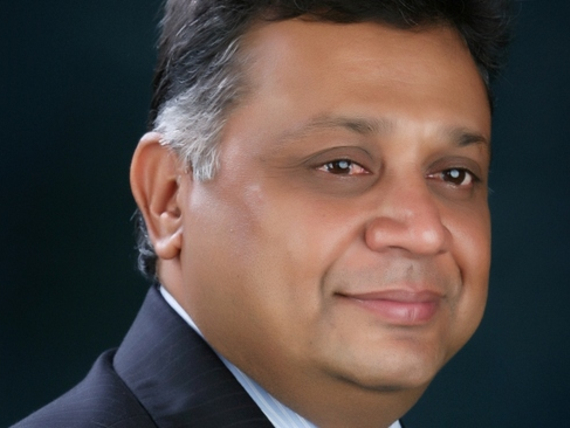Dream Acres is a 7.000 apartment residency located in the heart of Bangalore. It is the first project of Sobha Dream Series which is an outcome of Sobha´s vision to bring world class, highly-lively homes for today's Indian families. 81 acres of land with 80% open space, 500 exclusive apartments of highest standards as well as first class amenities are creating history in India. Up to 400,000 m² annually of walls, slabs, beams, columns and special precast elements are produced in the new Sobha precast concrete factory for Dream Acres, that is 150 precast elements a day. "Vollert's great knowhow as supplier of knowledge and the leading precast plant technology helped us to take this next milestone" explains Raj Pillai, Executive Director of Sobha Limited. We spoke with Raj Pillai about the Dream Acres project and the relevance of precast construction technology for India in the future.
20 months ahead of schedule
In India a G+14 building normally takes about 3-4 years to complete. Delayed delivery is one of the main issues the home buyer faces. Precast technology as construction method delivers better building quality and reduces construction costs, but even more important, it shortens construction times significantly. Homes in Sobha Dream Acres are getting completed in less than 300 days, 2 years ahead of time. Homes that were promised by delivery in 2018 will be delivered in 2016. "To give you a feel of construction pace, one floor has 8 apartments, and when they are broken down to elements we will have about 210 to 220 elements. With 150-200 elements capacity of production daily and 150-200 elements lifting capacity at site, we have a floor-cycle time of close to 3 to 5 days - compared to a conventional system with 10 to 15 days" says Raj Pillai. "This is possible by strict timelines and a perfect synchronization of production processes at factory and construction processes at site".
Building in precast architecture requires a lot of know-how. Besides the availability of skilled work force and training schemes at the factory, the main issue is the preparation of shop drawings for a CAD/CAM-optimized production of precast walls and slabs, and the implementation of a fully integrated ERP system for coordinating all production and building-up processes. To scale production capacities exactly with the build-up and crane hook times at site is a critical point.
"Another important issue is the quality of the concrete and the finished elements that have to be consistently high and at the same level. Modern precast construction requires defect-free walls and slabs in terms of parts geometry and dimensions. Therefore this point is decisive too", says Raj Pillai.
Difference between conventional projects and precast projects
In all advanced countries the preference of construction is precast technology. It offers better building quality due to the industrialized production process and construction projects are completed in much shorter time than previously. Now it is time for India to get on this state-of-the-art level of construction.
"In the world class facilities at Sobha in Bangalore we produce all elements for the Dream Acres project, realizing successfully the residencies in only 3 to 5 years. This would have not be possible with the normal conventional building methods. In addition Sobha has been able to decrease CO2 carbon footprint by 25%, water consumption by 50% and reduce waste and energy usage. Homes build with precast technology have great thermal behavior, are weather and fire resistant and even earthquake resistant. For the homebuyer side, precast means saving interest on pre-EMI payments, early rental opportunities and entering the dream home sooner that their expectations", explains Raj Pillai. "Simply said, the precast construction technology is a smart combination of optimally used raw material, efficient plant technology and time management. To embark on precast architecture one must know his requirements very clearly in concern to the building projects to be realized in future and the construction systems to be used. In addition there is a strong need for knowledge in concrete mixture and quality and for preparing the necessary shop drawings. And you have to invest yourself in the implementation of an efficient ERP software to link production and on-site processes".
In the pre-production stage there has to be a close cooperation between the real estate company, the architect and the plant engineering specialist, as Shoba had with Vollert. In this phase the optimum production concept is found in terms of cost and time. If properly planned and implemented, precast construction is less expensive than conventional construction methods by 15 to 20%. Even though the investment cost is higher at the beginning at first glance. In the end, the plant productivity and profitability figures are decisive. "We will have defect-free walls and slabs in terms of geometry, dimensions and quality, shorter building-up times, no maintenance costs and long building lifetimes of more than 50 years" says Raj Pillai.
Development of precast in India
The ´Housing for all by 2022´ government's scheme demands fast constructed affordable homes. With RERA in place and to fulfil these goals for Shoba precast technology is the only way. The most important advantage in precast technology is the benefit that it gives to the home-owner, because in terms of precast the quality of the building is so well done considering the concrete and the position of the elements. "In the conventional construction you have the problem of all kind of leakage etc. in 5 to 10 years of time. In precast that is totally eliminated and the life and durability of your house is more than a decade. And as a consequence maintenance cost can be kept as minimum as possible also" explains Raj Pillai.

